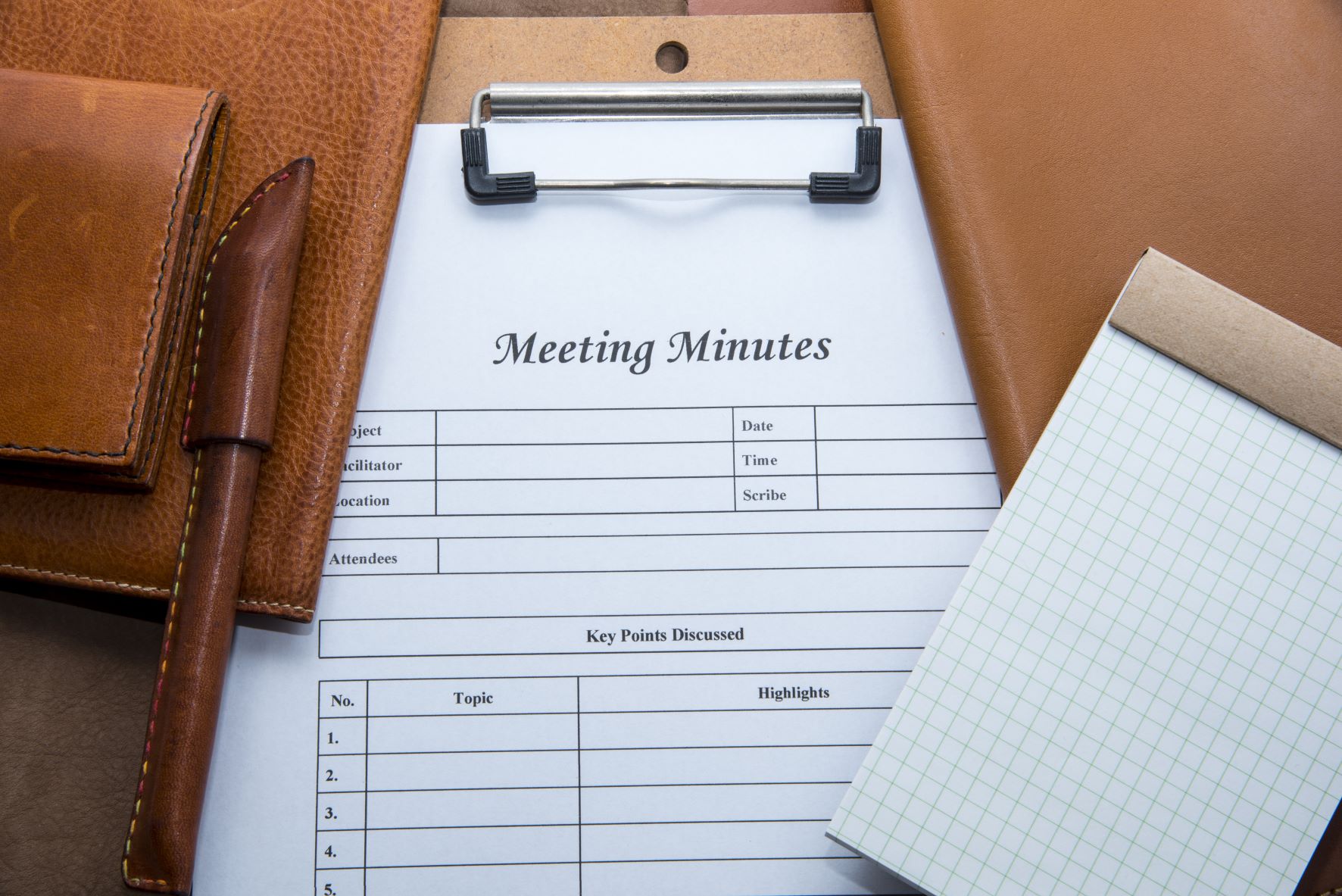Meetings occur every day in most businesses. They are a fundamental requirement, and each project has a unique set of meetings. They are essential for communication within a team, brainstorming, and working through ideas during the life of a project. Effective meetings require effective meeting minutes. These minutes record all that takes place during a meeting and help others understand the purpose and outcomes. Let’s take a look at what meeting minutes are and how to take them.
What are Meeting Minutes?
Simply stated, meeting minutes are notes taken during a meeting that will serve as the official account of the proceedings. Minutes are not to be confused with an agenda. They will include a summary of essential items discussed, ideas proposed, and decisions made. Meeting minutes are created for future reference and to inform the absent team members. Typically a meeting participant is designated to take notes; often, it’s a project manager or someone solely responsible for note taking, like an executive assistant.
Minute takers are generally careful listeners, quick typists, and familiar with the topics to be covered in the meeting and the attendees. They need to separate essential points from “background noise.” And most importantly, the note taker should not lead and take notes.
Why Should We Be Taking Minutes?
Minutes can provide a detailed history of a company’s short-term and long-term planning. Employees use minutes as a reference point to understand a company’s progression.
Meeting minutes are considered legal documents and can provide legal protection for a company. They record, catalog, and affirm a company’s ethical and responsible practices. Meeting minutes are vital because they:
- Provide a record of a company or group’s decisions and deliberations
- They identify the people given different responsibilities
- They act as evidence of assignment deadlines and deliverables
- They benefit absentees who were not present for decision-making during the meeting
- Identify and track action items
Meeting minutes also serve as a reference point when:
- A meeting’s outcome affects others’ collaborative tasks or projects within the workplace
- They can assist in reminding team members of assignments and deadlines.
When recording minutes, they need to be clear and concise. Strive for clarity and a consistent tone. They should include opportunities discussed, key points, action items, and needs. When using minutes to explain how management made specific decisions, there needs to be transparency and accountability.
Minutes can affect continuity in a program by bringing new team members up to date on a program or project’s history. They can track progress and oversee or unveil smaller projects with timelines, task lists, and targets.
How To Take Effective Meeting Minutes
Taking minutes during meetings can sometimes prove difficult, but taking accurate notes is essential. Here are some steps to follow to make minute-taking easy.
- Choose and set up a meeting minutes template and arrive fully prepared.
- If you take minutes for the first time, you may ask to see previous minutes to establish that template. Meeting templates should include several main topics at a minimum.
- Record meeting notes during the meeting or immediately after in a comfortable format.
- Listen before writing. It is better to summarize than try to write down everything said.
- Use bullets and keywords for easy readability.
- Stick to the facts. Leave out personal opinions or specifics about what a particular person says.
- Record action items, assigning each an owner to follow up with.
- Outline the next steps with critical dates and people identified.
- Keep it simple.
Making sure you have all the information needed to make your minutes effective doesn’t have to be complicated. There is some general information that all minutes should include:
- The time and date of the meeting
- Names of the meeting attendees as well as those absent, and those absent with apologies
- Acceptance, corrections, or amendments to previous meeting minutes
- Attendees make deliberations and decisions about every agenda item. These decisions include:
- Actions
- Next steps
- Motion outcomes if there were voting items on the agenda
- Responsibilities assigned, deadlines, and outcomes
- Items held over
- Any other business aside from what was on the agenda
- Date and time for the next meeting
What Do I Do With My Meeting Minutes?
After your meeting has concluded, please take a moment to proofread them. Add any essential information while everything is fresh in your mind. Pare down your meeting minutes to only include the essentials, a brief account of the discussion, and summaries of arguments made for and against any decision. Stay consistent in headings, punctuation, and formatting. Your minutes should be polished and professional.
Once the minutes have been approved, email them to all board members and attendees for review.
Being an expert minute taker may seem like a daunting task. You will be fine if you are willing to learn and are a great listener. And remember, practice is the best way to success.


